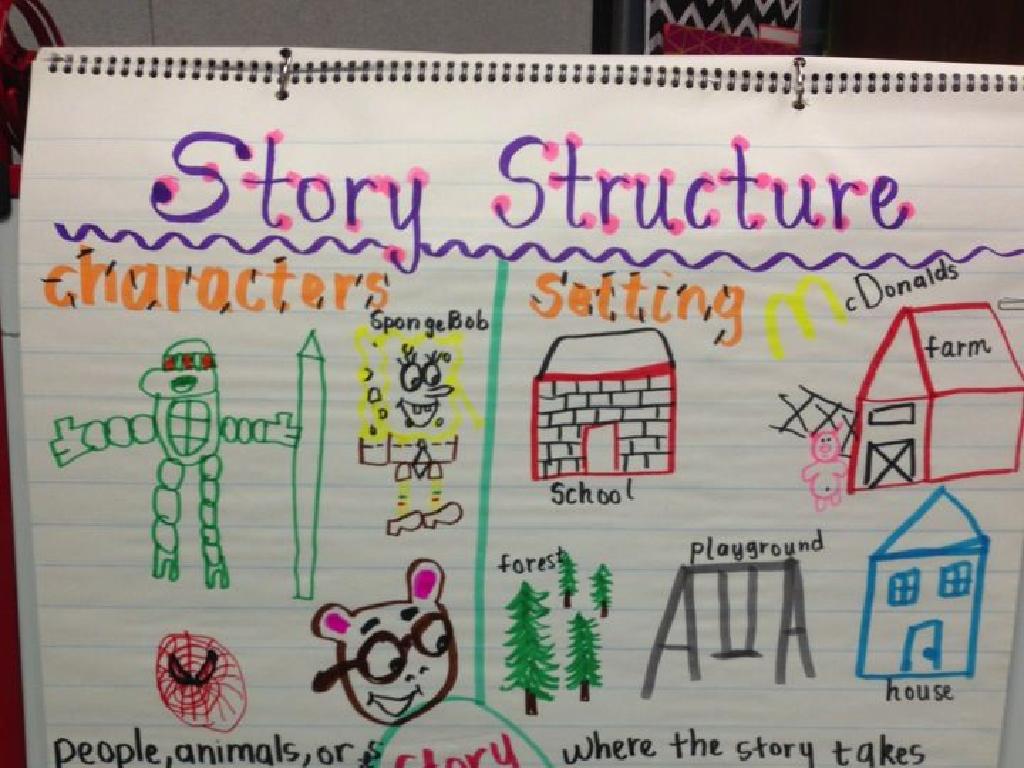Jamestown: Growth Of A Colony
Subject: Social studies
Grade: Fifth grade
Topic: English Colonies In North America
Please LOG IN to download the presentation. Access is available to registered users only.
View More Content
Welcome to Jamestown: America’s First English Colony
– Introduction to Jamestown
– Established in 1607, it was the first permanent English settlement in North America.
– Why Jamestown is significant
– Jamestown set the stage for the expansion of English culture and governance in the New World.
– Growth of the colony
– From a struggling fort to a thriving economy based on tobacco.
– Preview of today’s lesson
|
Today’s lesson will cover the establishment of Jamestown in 1607 and its importance as the first permanent English settlement in America. We’ll explore the challenges faced by the settlers, the development of the tobacco economy, and how Jamestown served as a blueprint for future colonies. Students will learn about the colony’s growth from a small fort into a prosperous settlement, setting the stage for the expansion of English influence in North America. Encourage students to think about the reasons why people would leave their homes to start a new life in a completely unknown world.
Establishing Jamestown: The First English Colony
– Jamestown founded in 1607
– Settlers faced harsh challenges
– Lack of food, disease, and conflicts with natives
– Virginia Company’s pivotal role
– Funded the expedition, seeking profit from the New World
– Overcoming obstacles for survival
– Adaptation and the development of tobacco farming
|
Jamestown, established in 1607 in present-day Virginia, was the first permanent English settlement in North America. The settlers faced numerous challenges, including severe food shortages, diseases, and difficult relations with the indigenous peoples. The Virginia Company, a joint-stock company, played a crucial role by financing the voyage and settlement, with the goal of profiting from resources found in the New World. Despite the hardships, the settlers eventually overcame these obstacles, partly due to the introduction of tobacco farming, which became an economic staple for the colony. This slide will help students understand the early struggles of English colonists and the importance of perseverance and adaptation.
John Smith and Pocahontas: Key Figures in Jamestown
– John Smith’s leadership
– Smith’s strong leadership helped the colony survive difficult times.
– Pocahontas aids Jamestown
– Pocahontas played a crucial role in the colony’s survival by helping settlers.
– Powhatan Confederacy’s role
– The Powhatan Confederacy, led by Pocahontas’s father, was vital for resources and support.
– Building relationships
– Positive relations with the Powhatan were key to the colony’s growth.
|
This slide highlights the significant contributions of John Smith and Pocahontas to the survival and growth of the Jamestown colony. John Smith’s leadership brought order and discipline, which were crucial in the early years. Pocahontas, daughter of Chief Powhatan, acted as a bridge between the English settlers and the Powhatan Confederacy, facilitating the exchange of food and knowledge. Understanding the importance of the Powhatan Confederacy’s relationship with Jamestown is essential, as their support was a determining factor in the colony’s success. Emphasize the theme of cooperation and its impact on the colony’s development. Encourage students to think about how these relationships shaped the future of Jamestown and the role of leadership in overcoming challenges.
Tobacco: The Cash Crop of Jamestown
– Tobacco’s role in economy
– Tobacco became the most profitable crop, changing Jamestown’s fate.
– John Rolfe’s tobacco experiments
– Rolfe’s new tobacco strains were more appealing to Europeans.
– Tobacco leads Jamestown’s growth
– With tobacco’s success, Jamestown expanded rapidly.
– Impact on colony’s success
|
This slide introduces students to the importance of tobacco in the economic development of Jamestown. Highlight how John Rolfe’s experiments with tobacco strains led to a high demand in Europe, which in turn brought wealth and growth to the colony. Discuss the concept of a ‘cash crop’ and how it can influence the prosperity of a community. Explain that the success of tobacco farming helped to stabilize Jamestown’s economy, leading to its expansion and the establishment of a successful English colony in North America. Encourage students to think about how one crop can have such a significant impact on society.
Daily Life in Jamestown
– Housing in early Jamestown
– Simple wooden structures, often with thatched roofs
– Settlers’ food and clothing
– Diet based on maize, local game; clothes from animal skins, linen
– Daily activities in the colony
– Farming, hunting, chores, and community meetings
– Roles of Jamestown’s inhabitants
– Men farmed and hunted, women managed homes, children helped with chores
|
This slide aims to give students a vivid picture of what everyday life was like for the settlers of Jamestown. Discuss the basic, often crude, housing conditions and the reliance on natural resources for building materials. Explain the settlers’ diet, which was heavily influenced by both English traditions and adaptations to local food sources, and their clothing, which was functional for work and weather. Highlight the typical daily activities that would occupy the settlers’ time, including farming, hunting, and participating in community decisions. Lastly, delve into the social structure of the colony by explaining the different roles and responsibilities of men, women, and children, emphasizing the community’s dependence on every member to contribute to the colony’s survival. Encourage students to compare life in Jamestown with their own daily lives to foster a deeper understanding of the historical context.
Challenges and Survival in Jamestown
– Understanding ‘The Starving Time’
– A period of extreme famine during the winter of 1609-1610
– Settlers’ adaptation and resilience
– Learning from the land and native friends to survive
– Arrival of new settlers and supplies
– Fresh manpower and resources boosted the colony’s chances
– Overcoming hardships
|
This slide aims to discuss the significant challenges faced by the Jamestown settlers, particularly during ‘The Starving Time,’ a period of severe famine and hardship. Emphasize the importance of adaptation and resilience, highlighting how the settlers learned to survive by making use of local resources and building relationships with Native American tribes. The arrival of new settlers and supplies marked a turning point for the colony, providing much-needed support and helping to ensure its survival. Encourage students to think about the qualities that helped the settlers overcome their challenges and how these events shaped the future of Jamestown.
Growth and Governance in Jamestown
– House of Burgesses establishment
– First legislative assembly in America, 1619
– Beginnings of representative government
– Early form of democracy; colonists had a voice
– Laws maintaining colony order
– Rules to manage behavior and disputes
– Impact on future governance
– Set stage for American self-governance
|
This slide explores the early governance of Jamestown, highlighting the establishment of the House of Burgesses in 1619 as the first legislative assembly in the New World. This marked the beginning of representative government, where colonists had a say in their own laws and governance, laying the groundwork for democracy in America. Emphasize the importance of laws and order in the growing colony, which were necessary to manage behavior and resolve disputes among settlers. Discuss how these early steps in self-governance impacted the future democratic principles of the United States. Encourage students to think about how these historical events relate to the way our government functions today.
Jamestown’s Legacy in American History
– Jamestown’s role in colonial expansion
– First successful English settlement in North America, paving the way for future colonies.
– Lasting effects on American history
– Jamestown introduced representative government and cultural diversity, which are key American values.
– Symbol of perseverance and enterprise
– Despite hardships, settlers persisted, showcasing the American spirit of determination.
– Jamestown’s influence on culture and society
– Influenced language, government, and economic practices in the U.S.
|
This slide aims to highlight the significance of Jamestown in the broader context of American history. Jamestown was not only the first successful English colony but also set the stage for the expansion of English influence in the New World. Its legacy includes the introduction of representative government with the House of Burgesses and the cultural diversity that became a hallmark of American society. The perseverance of its settlers in the face of adversity stands as a testament to the enduring spirit of enterprise that characterizes American history. Discuss how the colony’s experiences have influenced modern American culture, government, and economics, and encourage students to reflect on the importance of these historical events.
Class Activity: Building Jamestown
– Divide into small groups
– Create a Jamestown model
– Use craft materials to build a model of Jamestown as it looked in the 1600s
– Discuss daily colonial life
– Imagine living in Jamestown; what did people do every day?
– Present model and explanations
– Explain what each part of your model represents and why it’s important
|
This activity is designed to help students work collaboratively to understand the early days of the Jamestown colony. By dividing the class into small groups, students can engage in teamwork and share responsibilities. Using craft materials to create a model will give them a hands-on experience and make the history of Jamestown more tangible. Encourage them to research and discuss daily life in the colony to add depth to their understanding. When presenting, each group should explain the significance of different parts of their model, such as the fort, housing, or crops, to demonstrate their grasp of how the colony functioned and its importance in American history. Possible variations of the activity could include focusing on different aspects of the colony, such as government, economy, or relations with Indigenous peoples.





